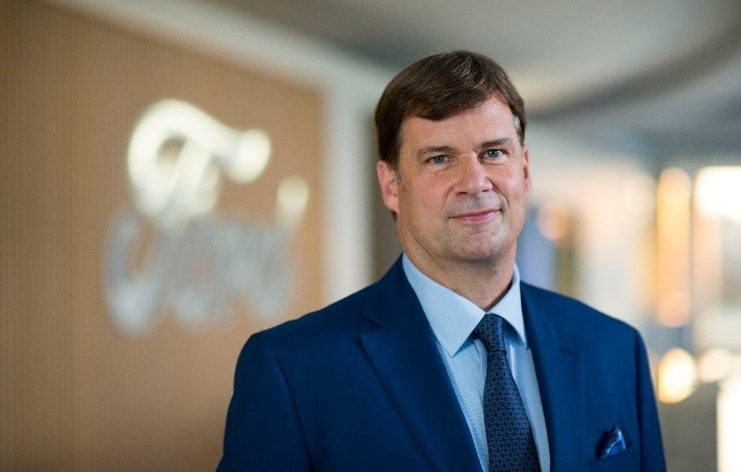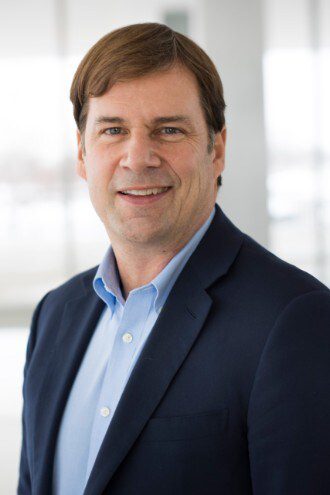Farley’s EV-Plant Bombshell Demonstrates Some Vision


 It turns out that the visionary Bill Ford Jr. wanted to run his car company is a car guy who rose up through the industry, not a digital guru from outside the auto business.
It turns out that the visionary Bill Ford Jr. wanted to run his car company is a car guy who rose up through the industry, not a digital guru from outside the auto business.
With his just-announced gambit to make Ford’s largest-ever investment in manufacturing—$7 billion worth of green-field electric-vehicle and battery plants in Kentucky and Tennessee—Ford CEO Jim Farley is committing Ford to its most focused corporate strategy in more than a decade. First, Farley talked the talk about making Ford an industry leader in EVs and digital platforms generally, and now he’s walking the walk.
And he’s making Ford Jr., the scion who is executive chairman of the iconic Dearborn, Michigan-based company, look awfully smart for tabbing Farley to succeed Jim Hackett last year. Company leadership is as focused and deliberate as at any time since Ford Jr. gave Alan Mulally, a top Boeing manufacturing executive, the helm of the automaker in 2006 and instructed him to save the company—which he did.
Ford announced this week that it will spend $7 billion and create nearly 11,000 jobs on two new campuses that will have enough annual battery-production capacity to power one million SUVs.

The company plans to build a 3,600-acre “mega campus” northeast of Memphis called Blue Oval City that will include Ford’s first new assembly plant in more than 50 years. The site is three times the size of Ford’s fabled Rouge Complex in Michigan, where Henry Ford first comprised a complete supply chain to build cars. Ford will hire about 6,000 people at Blue Oval City to assemble next-generation F-Series pickups and will include battery-cell production and a supplier park.
And south of Louisville, where Ford already has an assembly plant, the company will build a 1,500-acre battery park under its BlueOvalSK joint venture with battery supplier SK Innovation. The site will comprise two battery plants making advanced lithium-ion batteries, with one opening in 2025 and the other in 2026. Ford said the Kentucky site will create 5,000 jobs.
It wasn’t but several months ago that Ford’s strategy for EVs was to stay slightly behind its pack of rivals, source its batteries from outside the company and wend its way with moderation into an electric-car market whose growth rates remain unpredictable.
That was the approach taken by Hackett, the former Steelcase Corp. CEO whom Bill Ford hired in 2017 to replace Mark Fields as CEO, because he liked Hackett’s “design thinking” and previous exposure to Silicon Valley. Hackett was the industry outsider that he thought Ford needed to re-set the company for a digital future, especially after career Ford executive Mark Fields, Hackett’s predecessor, only treaded water.
After rising through industry and Ford ranks in a rather traditional way, Farley was installed as CEO late last year and quickly began turning things on their head at Ford. He fast-tracked the launch of the Mustang Mach-E, an all-electric interpretation of the company’s famous pony car, and of the F-150 Lightning all-electric pickup truck, a battery-propelled version of America’s best-selling vehicle.
But Farley’s biggest move has been to engineer a quick about-face on EVs. Earlier this year he committed the company to spend more than $30 billion by 2025 on EVs and, overturning Hackett’s strategy, to source its own batteries. After seeing the devastating production cuts at Ford and across the industry this year because of the microchip shortage, among other things Farley didn’t want his company ever exposed to someone else’s control of the heart of an EV.
The EV-spending number that Farley threw up was similar to the $35-billion commitment made earlier by Mary Barra, CEO of Ford’s cross-town rival, General Motors, and was meant to send a message to GM and the rest of the industry: Ford will not be playing fast follower in EVs.
Farley—whose career-defining accomplishments at Ford largely had come as a marketing chief before he ascended to the top job—also began positioning the company as a digital player in comments to Wall Street and others. He emphasized Ford’s new focus on over-the-air software updates (a la Tesla), for example, that offer the prospect Ford will be able to tap into high-margin, recurring subscription revenue.
And there’s more. Farley has bundled up aspects of Ford’s strengths in commercial and government sales, and its industry-leading product lines of things like police vehicles and small-business vans, into a new emphasis and brand called Ford Pro, which he believes can be the tip of the spear to even greater Ford penetration in markets that aren’t a priority to some automakers—but are going to be more important in the future.
Investors have responded particularly well to Farley’s strategic departure and bold moves, with Ford shares about doubling over the past year to nearly $14 by last week, and above $14 on Tuesday after the big EV announcement.
“It’s been so long since we had a reasonable sense of confidence in Ford’s EV/AV/mobility strategy,” Adam Jonas, an analyst with Morgan Stanley, wrote in an investor note this month. “Still a ton of work to do … However, we see the pieces coming together and the collection of human talent to turn the vision into execution.”
Farley continues to face challenges, of course. Besides dealing with the ongoing microchip shortage that is afflicting every one of his peer CEOs, Ford has continuing product-quality challenges, including an issue with the sunroof of the much-hyped new Ford Bronco and some early recalls on the Mach-E.
The “people’s pick” within Ford to get the job Farley has was probably Joe Hinrichs, who under Hackett was in charge of Ford’s global businesses, manufacturing, and product development, while Farley oversaw new business, strategy and autonomous vehicles. Ford’s disastrous launch in 2019 of a new version of its crucial Explorer large SUV occurred on Hinrichs’ watch.

Chief Executive Group exists to improve the performance of U.S. CEOs, senior executives and public-company directors, helping you grow your companies, build your communities and strengthen society. Learn more at chiefexecutivegroup.com.
0

1:00 - 5:00 pm
Over 70% of Executives Surveyed Agree: Many Strategic Planning Efforts Lack Systematic Approach Tips for Enhancing Your Strategic Planning Process
Executives expressed frustration with their current strategic planning process. Issues include:
Steve Rutan and Denise Harrison have put together an afternoon workshop that will provide the tools you need to address these concerns. They have worked with hundreds of executives to develop a systematic approach that will enable your team to make better decisions during strategic planning. Steve and Denise will walk you through exercises for prioritizing your lists and steps that will reset and reinvigorate your process. This will be a hands-on workshop that will enable you to think about your business as you use the tools that are being presented. If you are ready for a Strategic Planning tune-up, select this workshop in your registration form. The additional fee of $695 will be added to your total.

2:00 - 5:00 pm
Female leaders face the same issues all leaders do, but they often face additional challenges too. In this peer session, we will facilitate a discussion of best practices and how to overcome common barriers to help women leaders be more effective within and outside their organizations.
Limited space available.

10:30 - 5:00 pm
General’s Retreat at Hermitage Golf Course
Sponsored by UBS
General’s Retreat, built in 1986 with architect Gary Roger Baird, has been voted the “Best Golf Course in Nashville” and is a “must play” when visiting the Nashville, Tennessee area. With the beautiful setting along the Cumberland River, golfers of all capabilities will thoroughly enjoy the golf, scenery and hospitality.
The golf outing fee includes transportation to and from the hotel, greens/cart fees, use of practice facilities, and boxed lunch. The bus will leave the hotel at 10:30 am for a noon shotgun start and return to the hotel after the cocktail reception following the completion of the round.